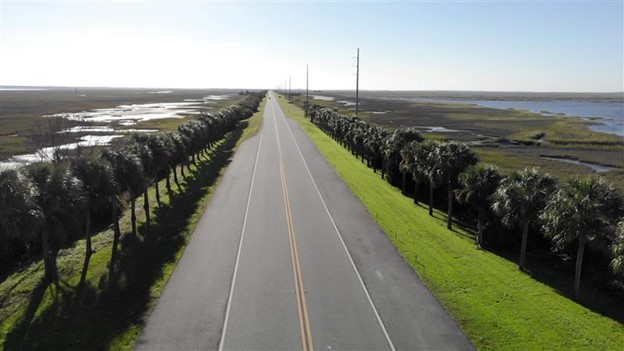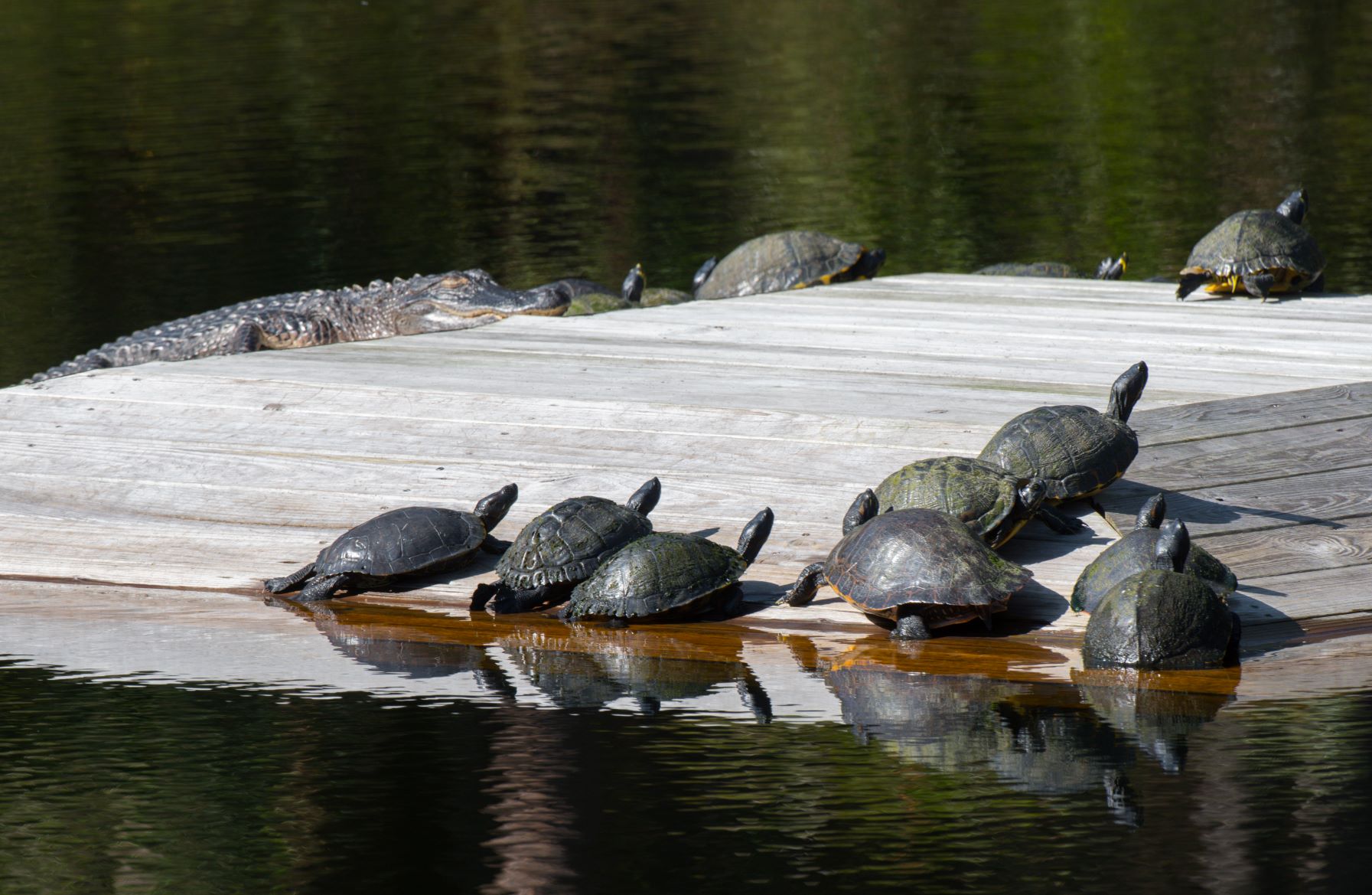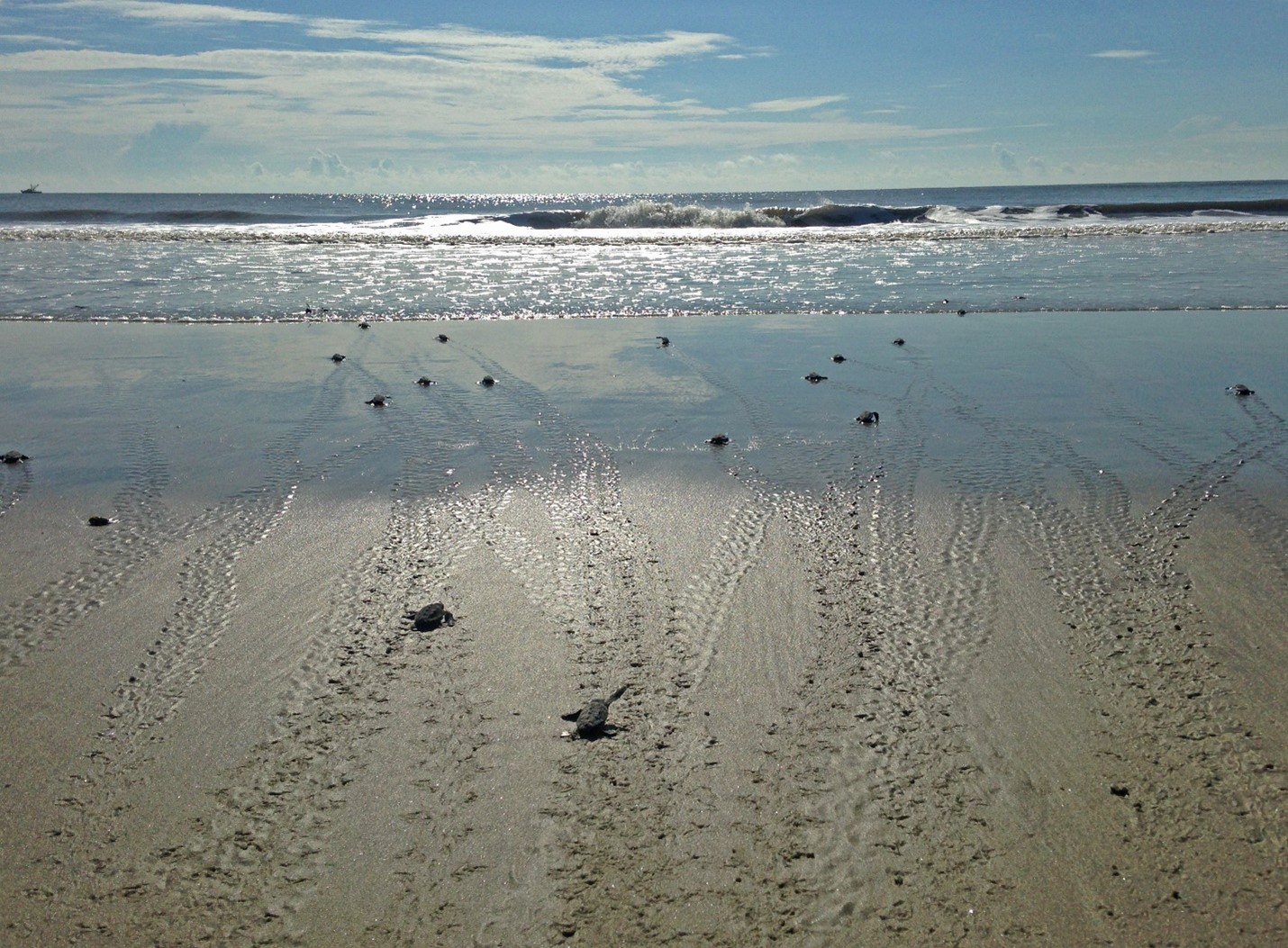With May 1st marking the official start of turtle nesting season along the Georgia coast, the Georgia Sea Turtle Center (GSTC) is already busy patrolling Jekyll Island’s causeway for diamondback terrapins and beaches for nesting sea turtles.
DIAMONDBACK TERRAPINS
The GSTC and Jekyll Island Foundation (JIF) donors have partnered for nearly 10 years in diamondback terrapin rescue, research, and implementation of various protection methods during nesting season. These efforts focus on decreasing terrapin road mortality rates. The GSTC’s diamondback terrapin patrol team routinely drive the causeway in search of nesting mamas crossing the road and inspecting nest boxes for similar signs. Recently, JIF and ANIMEX, a new partner, donated fencing materials that were installed on either side of the entrance to Jekyll’s causeway, adding one more component used to help decrease terrapin roadway mortality rates.
SEA TURTLES
And along the beaches these ancient reptiles emerge from the ocean to begin nesting as early as May. Fertile turtles crawl slowly to the dunes, enter a trance as their eggs drop into the sand, laying over 100 ping-pong ball-like eggs under the cover of darkness. Then, the GSTC Sea Turtle Patrol Team jumps into action gathering measurements, identification information, and ensuring the nest is protected from predators and human disturbances. The data collected helps inform local, regional, and international conservation efforts.
Jekyll Island visitors hoping to catch a glimpse of this once-in-a-lifetime experience can join GSTC educators under the stars by registering for an Evening Turtle Walk or Ride with Night Patrol on select nights in June and July. There’s no guarantee a nesting turtle will appear, but the evening promises to make the night memorable!
The GSTC hospital and patrol teams continue to work diligently to rescue and rehabilitate these gentler creatures. Investments of any size are welcome and appreciate. GIVE NOW.





